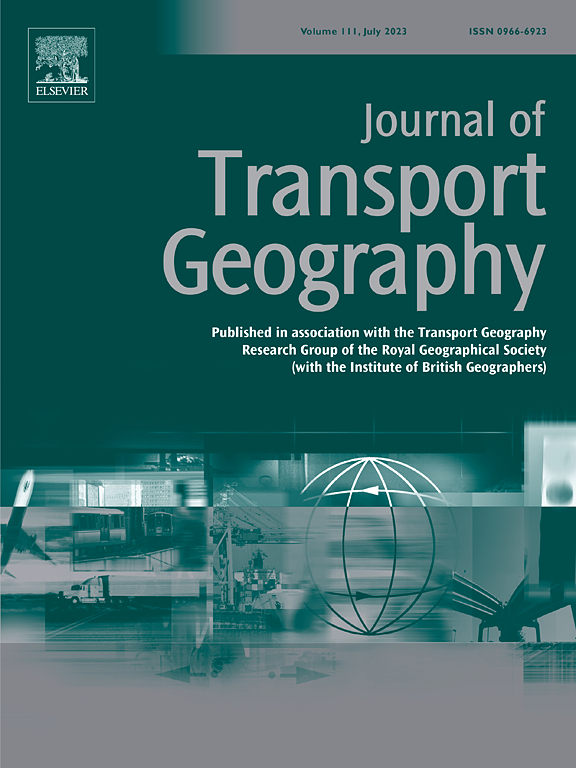城市流动性排名动态
IF 6.3
2区 工程技术
Q1 ECONOMICS
引用次数: 0
摘要
人类流动性是城市动态的一个关键方面,与城市可持续性有着深刻而多方面的关系。尽管在过去几十年里对交通模式进行了大量的分析,但城市交通的排名动态却受到了有限的关注。本研究旨在通过调查60个中国城市不同地点每小时资金流入的级别和规模的变化,为该领域做出贡献。我们发现,在一天的过程中,每小时流入的排名大小分布在城市之间是稳定的。为了揭示在流动地点变化中稳定的总体分布下的微观动力学,我们分析了连续小时的流入规模和排名变化。我们的发现揭示了一个二分法:日平均流入较高的地区显示出明显的单调趋势,连续小时流入的增加或减少更为明显。相比之下,排名变化呈现出非单调模式,其特点是不仅排名靠前和靠后的地区稳定,而且某些城市的中游地区也稳定。最后,我们比较了不同土地利用类型和城市的排名动态。研究结果促进了我们对城市交通动力学的理解,为城市规划和交通工程的应用提供了基础。本文章由计算机程序翻译,如有差异,请以英文原文为准。
Ranking dynamics of urban mobility
Human mobility, a pivotal aspect of urban dynamics, displays a profound and multifaceted relationship with urban sustainability. Despite considerable efforts analyzing mobility patterns over decades, the ranking dynamics of urban mobility has received limited attention. This study aims to contribute to the field by investigating changes in rank and size of hourly inflows to various locations across 60 Chinese cities throughout the day. We find that the rank–size distribution of hourly inflows over the course of the day is stable across cities. To uncover the microdynamics beneath the stable aggregate distribution amidst shifting location inflows, we analyzed consecutive-hour inflow size and ranking variations. Our findings reveal a dichotomy: locations with higher daily average inflow display a clear monotonic trend, with more pronounced increases or decreases in consecutive-hour inflow. In contrast, ranking variations exhibit a non-monotonic pattern, characterized by the stability not only of the top and bottom rankings, but also of mid-ranked locations in certain cities. Finally, we compare ranking dynamics across land use types and cities. The results advance our understanding of urban mobility dynamics, providing a basis for applications in urban planning and traffic engineering.
求助全文
通过发布文献求助,成功后即可免费获取论文全文。
去求助
来源期刊

Journal of Transport Geography
Multiple-
CiteScore
11.50
自引率
11.50%
发文量
197
期刊介绍:
A major resurgence has occurred in transport geography in the wake of political and policy changes, huge transport infrastructure projects and responses to urban traffic congestion. The Journal of Transport Geography provides a central focus for developments in this rapidly expanding sub-discipline.
 求助内容:
求助内容: 应助结果提醒方式:
应助结果提醒方式:


